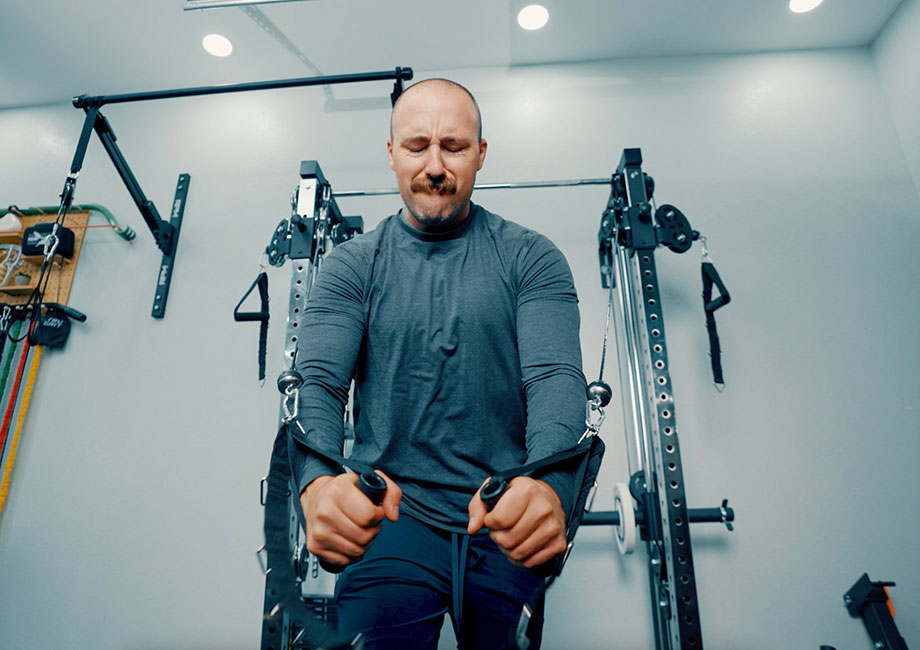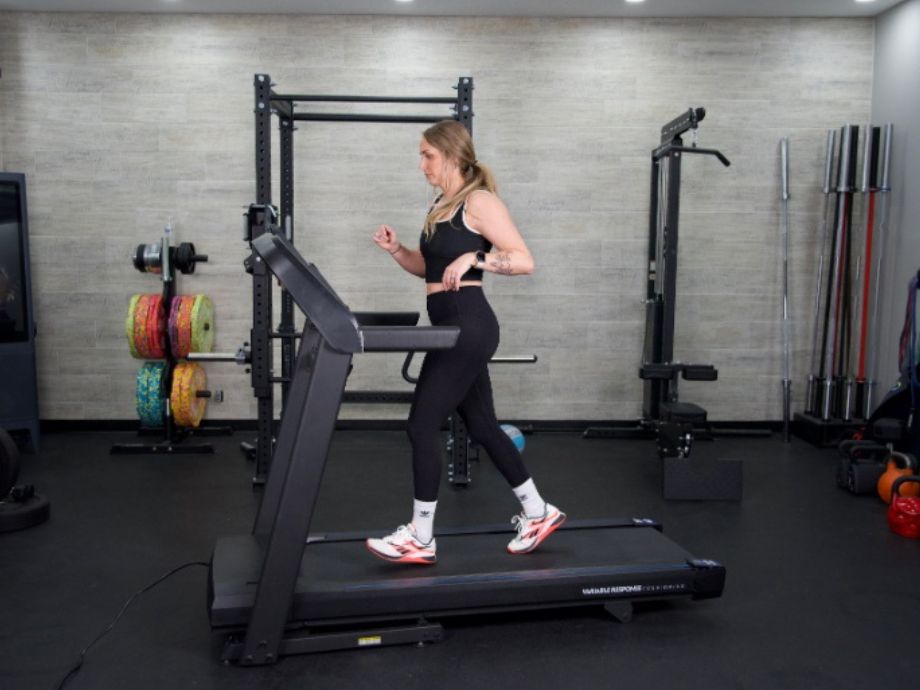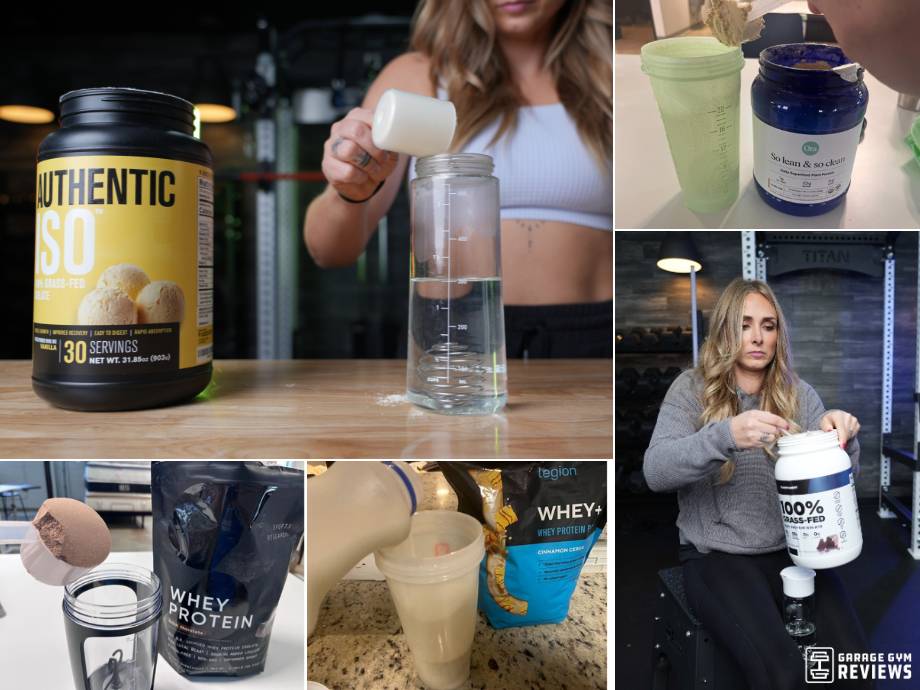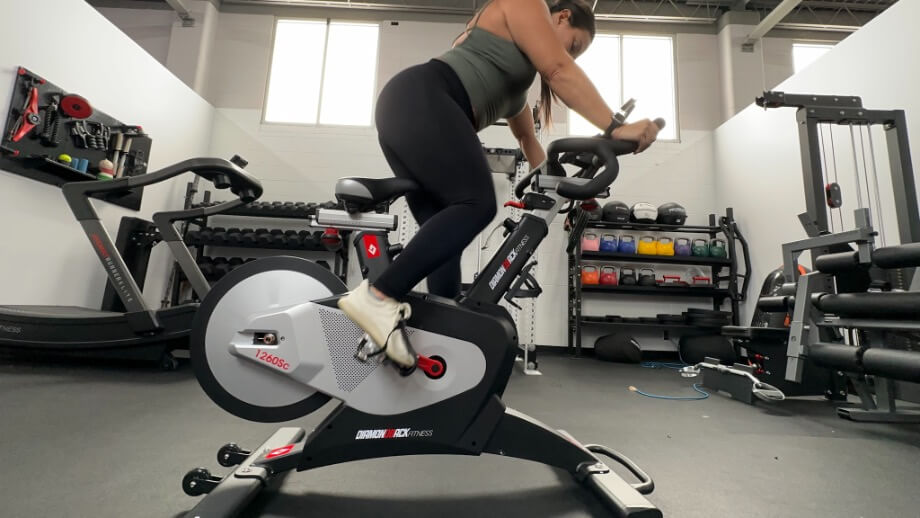Chest day is the best day. You get to blast out fitness favorites like the bench press, cable crossovers, dumbbell flyes, and other choice picks to help target those pectorals and provide a strong, shapely upper body to the lifter. But, the best way to get well-rounded results is by targeting each of the three regions, being the upper, middle, and lower pectoral muscles, individually to ensure each gets its due.
RELATED: Try These Low Chest Workouts
Today, we’re honing in on the best lower chest exercises you should be doing for your chest training program. GGR Director of Fitness Content Kate Meier, NASM-CPT, USAW-L1, CF-L1, covers everything you need to know for the lower chest below.
6 Best Lower Chest Exercises
“Most fitness enthusiasts will recognize the below lower chest exercises, but each is a variation that’s specifically tailored for hitting the lower pecs,” says Kate Meier, NASM-CPT, USAW-L1, CF-L1. “The movement pattern will be familiar, but the angle of the exercise and corresponding stimulus targets the lower pecs rather than the middle.”
Without further ado, here are the six best lower chest exercises.
Decline Barbell Bench Press
According to the International Journal of Environmental Research and Public Health1, you’ll get “significantly greater lower pectoral activation with a decline bench press.”
We’re covering the barbell version, but you can also choose to do the decline bench press with a pair of dumbbells instead because, according to the Journal of Strength and Conditioning Research2, barbells and dumbbells place a similar demand on the upper body.
Why do it: The bench press is a bodybuilder and gym-bro favorite because no other exercise provides activation to the pectoralis major, pectoralis minor, triceps, and anterior deltoid to the same extent. Doing the bench press at a decline increases lower pectoral activation, so it’s a must for your lower chest workout.
How to do it:
- Adjust your weight bench so that it’s at approximately 30-degrees of decline.
- Load your barbell to the desired weight and lie on the bench beneath it.
- Reach up and grip the bar slightly outside shoulder-width with an overhand grip.
- Breathe in, then exhale as you unrack the bar and position it over your chest.
- Keeping your core tight and shoulder blades pinched, slowly guide the bar toward your sternum by bending your elbows. Continue until it lightly touches.
- Pause, then exhale and press the bar back to the starting position.
- Repeat for reps.
RELATED: Best Olympic Barbell
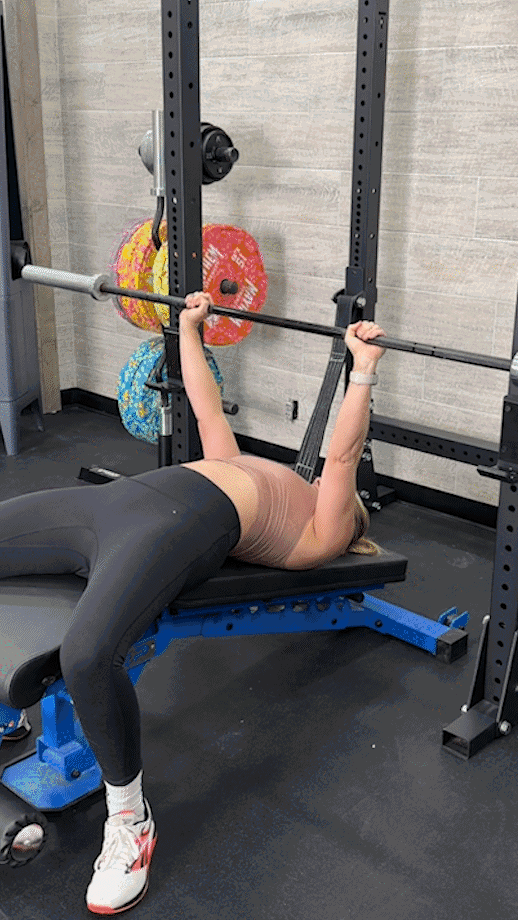
Decline Push-Up
Why do it: The push-up ranks as one of the best bodyweight movements available in general, but that’s especially true for your chest muscles. Doing push-ups at a decline mostly targets the upper chest, but you should reap some rewards in regard to overall upper body strength, too.
How to do it:
- Position yourself with a step-up platform, plyo box, or other raised surface behind you.
- Place your hands on the floor with your wrists stacked beneath your shoulders.
- Place your feet on the elevated platform behind you, keeping them together.
- Maintain a neutral neck and spine, brace your core, and keep your elbows tucked into your torso as you bend your elbows and lower your chest to the floor.
- Continue until your chest lightly touches the floor, then push yourself back up.
- Repeat for reps.
RELATED: What Muscles Do Push-Ups Work?
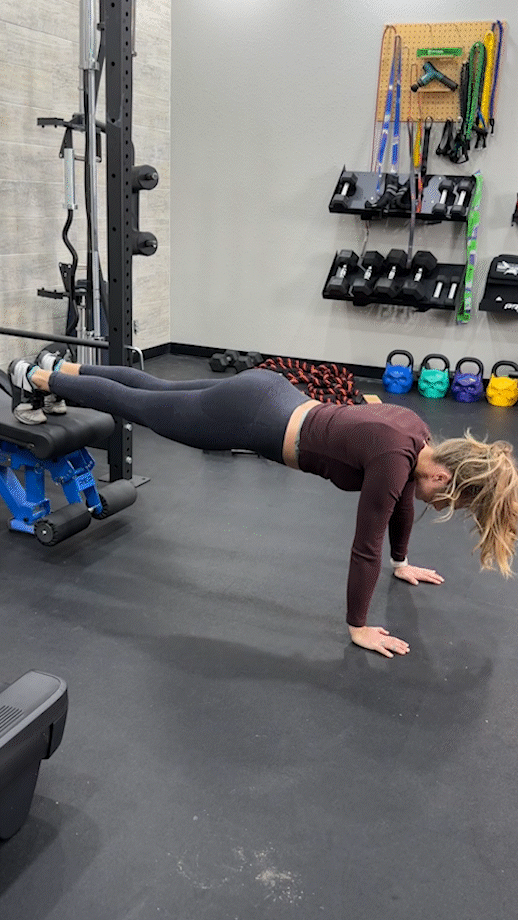
Chest Dip
Chest dips provide unparalleled activation to various upper body muscle groups, including your triceps, shoulders, chest muscles, and core. Simply angle your torso forward to increase activation to your chest.
We’re covering the classic bar dip, but you may perform this exercise using a weight bench or set of gymnastics rings, which requires advanced core strength.
Why do it: All you need is a place to do your dips and you’ve got access to one of the best bodyweight exercises for building your chest, shoulders, back, upper arms, and core.
How to do it:
- Grip the handles of your dip station or parallel bars, keeping your back flat, core tight, wrists strong, and chest tall.
- Lift your feet off the floor. You may cross your ankles behind you to reduce the risk of touching down on each rep.
- Flex your elbows to lower your body towards the floor.
- Continue until your elbows form 90-degree angles.
- Pause, then extend your elbows to push yourself back to the starting position.
- Repeat for reps.
RELATED: Dips Vs Pull-Ups
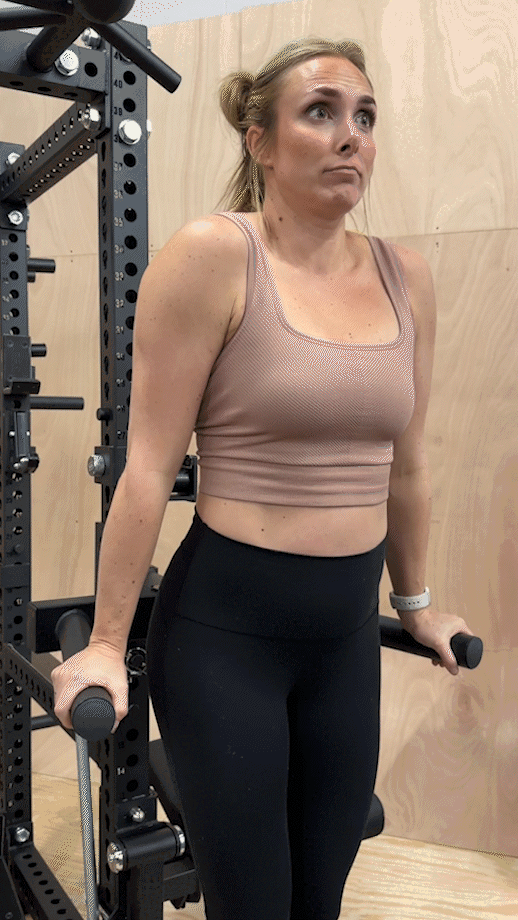
Decline Dumbbell Fly
Why do it: “Performing chest exercises at a decline is especially beneficial for the lower pectoral muscles,” says Kate. “Dumbbell flyes make a great addition to any chest workout because, unlike the other pressing movements, they employ adduction to provide a unique stimulus to your entire chest.”
How to do it:
- Adjust your weight bench so that it’s at approximately 30-degrees of decline.
- Grab a pair of the best dumbbells and lie supine on the bench.
- Press the dumbbells directly over your chest. You want your palms facing each other (neutral grip) for this exercise.
- Maintaining a slight bend in the elbows, bring your arms outward and down until they are roughly at your sides. Keep your shoulder blades pinched as you move.
- Pause, then bring the dumbbells back to the peak position.
- Squeeze your pecs, then repeat as needed.
RELATED: Chest Fly Workout
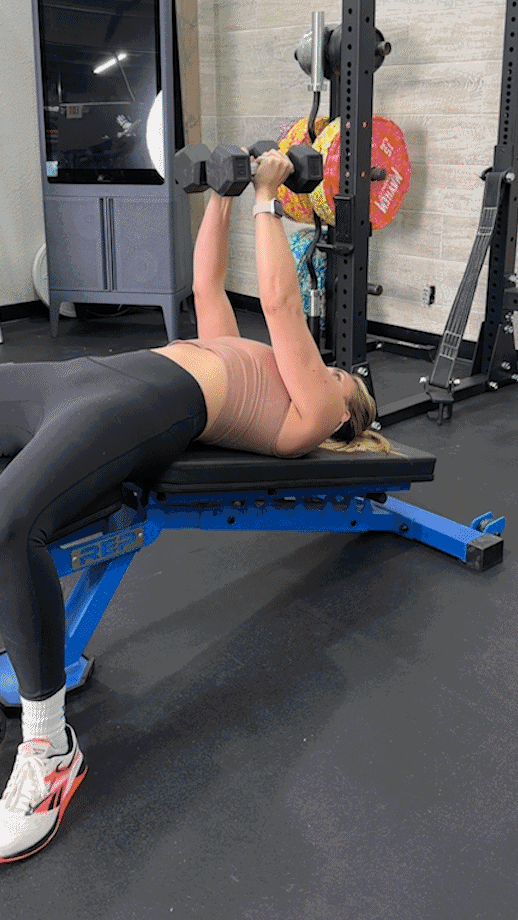
High Cable Fly / Cable Crossover
Why do it: Free weight exercises are excellent, but cable machines provide a different stimulus to the target muscle groups since they employ constant tension throughout the range of motion. According to the Journal of Strength and Conditioning Research3, cable exercises “may provide more effective interventions for some [activities of daily living]” because of the greater range of motion and biomechanical patterns that more closely mirror everyday movements.
How to do it:
- Attach two D-handle attachments to the cable machine.
- Set the pulleys to the highest position.
- Grip a handle in each hand using a neutral grip and position yourself between them.
- Step forward to create tension on the cable and lean your upper body forward.
- Maintaining a slight bend in your elbows, pull the handles down and across your body.
- For the high cable fly, meet your hands in the middle and squeeze your chest muscles. For the cable crossover, cross one arm over the other. This will produce a stronger contraction of the chest muscles, making it more challenging than the high cable fly.
- Slowly bring the handles back to the starting position.
- Reset and repeat for reps.
RELATED: Cable Crossover Exercise
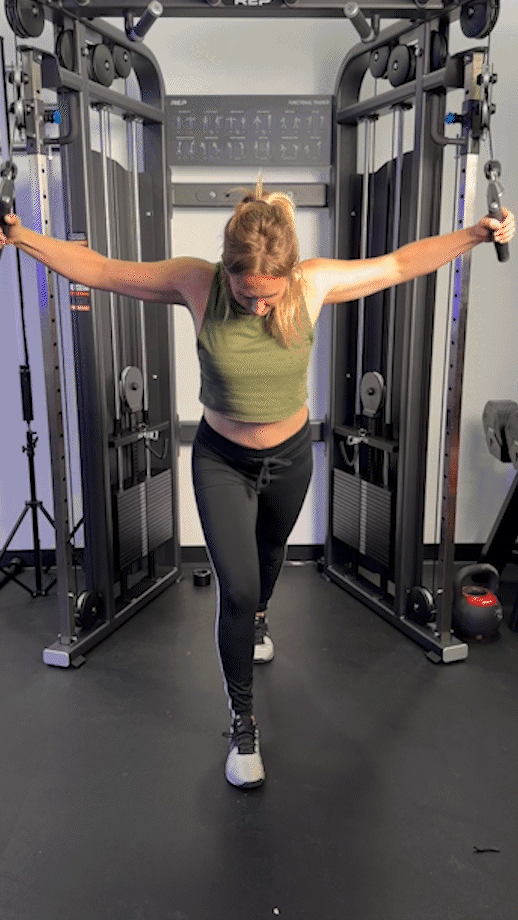
Incline Push-Up
Why do it: “Standard push-ups and decline push-ups provide a great stimulus to your pec muscles, but performing the movement at an incline hits the lower portion of your chest muscles with greater intensity,” explains Kate.
How to do it:
- Stand with a step-up platform, bench, plyo box, or other raised surface in front of you.
- Place your hands on the elevated platform with your hands roughly shoulder-width apart and your arms fully extended save for a slight bend in your elbows.
- Bend your elbows, keeping them tucked into your body, to lower your chest.
- Continue until your elbows are near full flexion.
- Pause, then push yourself back to the starting position.
- Repeat for reps.
RELATED: 17 Push-Up Variations
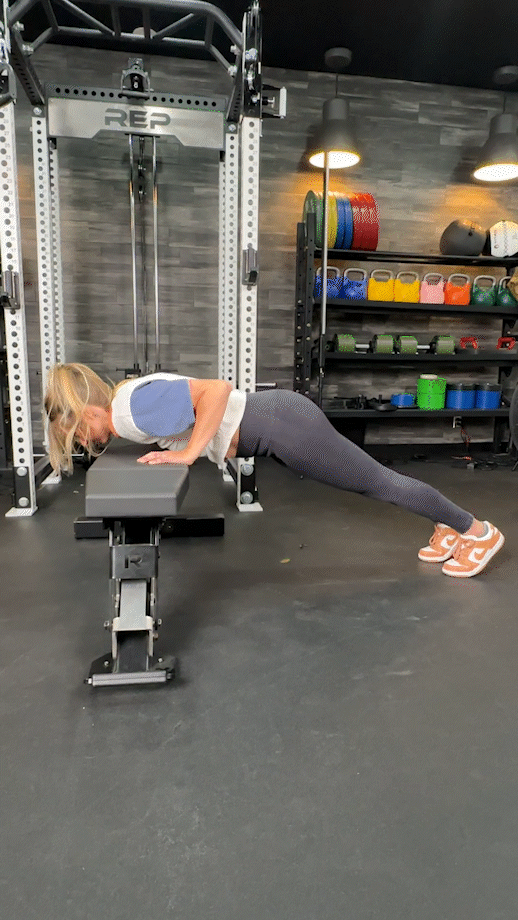
Expert Training Tips
Beginners looking to build muscle and strength in the lower chest may need more guidance than just what exercises to perform, so here are a few expert training tips to help along the way.
Control the Movement
Many of the best chest exercises, lower chest or otherwise, employ a movement pattern that could be easily cheated by letting gravity take over the concentric phase (shortening of the muscle), namely the bench press and the push-up.
“It becomes more tempting to let gravity do the work as fatigue sets in, but letting the bar crash down on your chest is not only dangerous, it’s cheating, too,” says Kate Meier, NASM-CPT, USAW-L1, CF-L1. “You’re depriving your muscles of tension during the entire concentric phase of the exercise.”
Half reps don’t count when you shortchange your range of motion, so why would they count if you’re basically falling limp to the floor during each push-up?
Move slowly and with control during all phases of the movement, especially the easy-to-cheat concentric phase.
Keep It Varied
Some bodybuilders and gym-bros cling to the barbell like it’s their childhood blanket. We can understand gravitating to things that provide comfort and confidence, but stepping a little outside of that comfort zone can be a good thing sometimes.
“Don’t be afraid to use variations and alternatives to keep the stimulus varied,” says Kate. “For example, if you’re habitually doing the barbell decline bench press, switch to the dumbbell bench press or incline bench press one week. If you’re doing incline push-ups, switch to flat or decline the next time around.”

According to the Journal of Strength and Conditioning Research4, “varying exercise selection can…enhance regional hypertrophic adaptations and maximize dynamic strength,” so stave off boredom and enhance those gains in one fell swoop by keeping the programming varied.
Know When to Rest
A 2017 study in Muscle & Nerve5 specifically evaluated the recovery process of the pectoralis major and triceps brachii after the bench press exercise. The results showed these two major muscle groups required approximately 48 hours after training to return to normal function.
That means even if your sole goal in the gym is to build lower chest muscle and strength, you won’t make as much headway if you’re not giving yourself enough time to recover.
Instead, perform light cardio for active recovery, pencil in a leg day, or pamper yourself at the spa so that you’re nothing less than 100% when you return to lower chest training.
Benefits of the Best Lower Chest Exercises
So, what benefits might you enjoy from performing lower chest exercises?
Increased Size, Strength, and Endurance
Targeting the lower chest provides many of the same garden variety benefits as other chest exercises, including increases in the muscle size, strength, and endurance.
Bodybuilders will be especially pleased with the results of lower chest training, as specifically working to hit the lower portion of the chest muscles results in a more symmetrical appearance of the muscle.
Improved Posture
The pectoralis minor may be a chest muscle, but one of its main functions is stabilizing the scapulae. So, insufficient strength and endurance of the pectoralis minor may result in the shoulders rounding forward and contributing to poor posture.
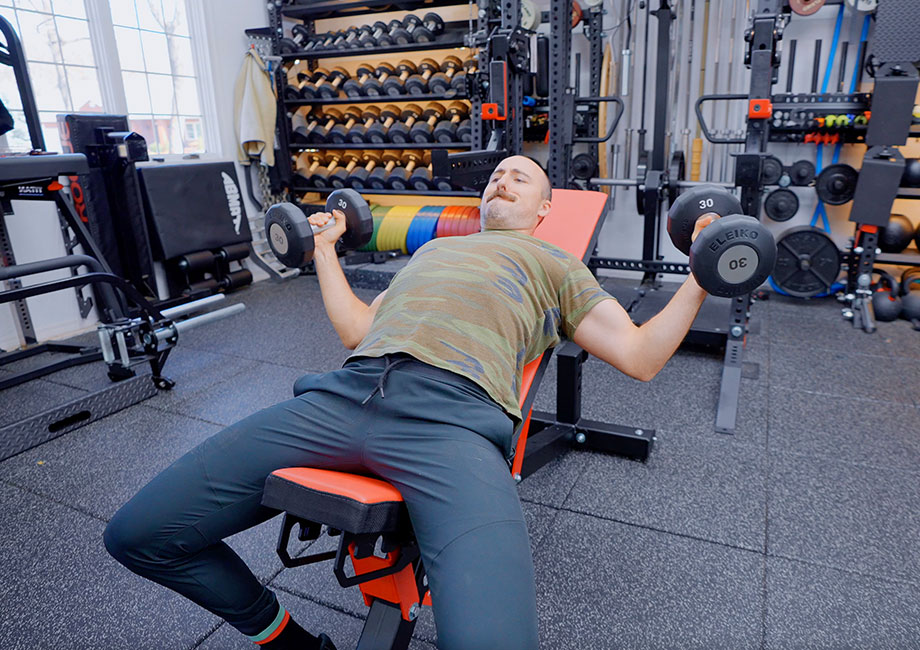
A 2018 study in the Journal of Physical Therapy Science6 observed this effect firsthand and determined stretching and strengthening the pectoralis minor should combat these ill effects and result in better posture.
Better Breathing
Most people would never expect chest training to have a direct effect on respiratory function, but considering the pectoralis major sits atop the ribcage and that breathing relies on chest expansion, it makes perfect sense.
Sarcoidosis Vasculitis and Diffuse Lung Diseases7 examined this relationship in a 2022 study involving elderly patients with idiopathic pulmonary fibrosis. While they were unable to draw definitive conclusions based on the data, it was noted that patients with IPF exhibited less pectoralis major strength than healthy subjects.
So, strengthening the pectoralis major may contribute to better breathing, and while more research is required, could be crucial for combating pulmonary diseases such as IPF.
How to Warm-Up Your Lower Chest
Are you ready to slam your favorite pre-workout and hit the weights like a beast?
Pump the brakes, tiger. You’re putting yourself at an increased risk of injury if you go in cold.
Before getting down to business, work a few dynamic exercises into the mix, including arm circles, push-ups, T push-ups, pull-aparts, and pass throughs, to name a few.
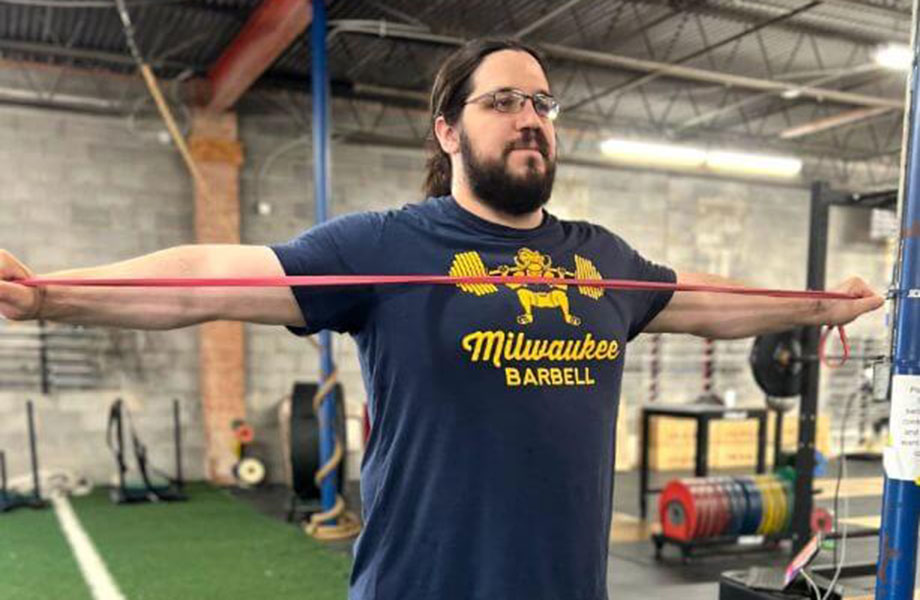
RELATED: Best Warm-Up Exercises
“I often advise performing a few light sets of the programmed exercise before progressing to heavy weights,” says Kate. “For example, if your working weight on the bench press is around 225 pounds, do a few reps at 95 pounds first, then move to 135, 185, even 205, just to get your bearings. Start light to warm up your muscles, then get into your working sets from there.”
Sample Lower Chest Day Workout
“Our sample lower chest day workout is engineered for maximum hypertrophy,” says Kate Meier, NASM-CPT, USAW-L1, CF-L1. “For strength gains, use heavy weights for less reps. For muscular endurance, go light and double the number of reps.”
| Exercise | Sets | Reps |
| Decline Bench Press | 4-6 | 6-12 |
| Cable Crossover | 4-6 | 6-12 |
| Dumbbell Fly | 4-6 | 6-12 |
| Incline Push-Up | 4-6 | 6-12 |
RELATED: Hypertrophy Workout 101
Lower Chest Anatomy
Your lower chest8 is made up of two major muscles.

Pectoralis major
The pectoralis major9 is the most pronounced muscle of the chest, as it is the largest and most superficial. It stretches from your clavicle to your sternum traveling all the way down to the middle of your ribcage.
The pectoralis major consists of two main heads: the clavicular head and sternocostal head, each of which help move your upper arm within your shoulder joint.
Pectoralis minor
As the name suggests, the pectoralis minor is less prominent than its major counterpart. Sitting directly beneath your pectoralis major, the pectoralis minor assists scapular movements like stabilization, depression, and retraction.
Best Lower Chest Exercises: FAQs
How do I build my lower chest?
Building the lower portion of the pectoralis major relies on performing movements specifically targeting the chest fibers at that location.
Lower chest exercises such as the decline bench press, decline dumbbell fly, cable crossover, and incline push-up are among the best movements for targeting those muscles.
How do you target your inner lower chest?
There’s technically no “inner lower chest” to target, but focusing on movements that isolate and work the sternocostal head of the pectoralis major will result in more activation in the inner region of the chest muscles.
RELATED: Inner Chest Workout
Do push-ups work the lower chest?
“Yes and no,” says GGR Senior Director of Fitness Content Kate Meier, NASM-CPT, USAW-L1, CF-L1. “Push-ups work the entire chest, but adjusting the angle can help emphasize one portion of the chest over another. For targeting your lower chest, you’ll want to work incline push-ups into your rotation more often than standard and decline push-ups.”
How do you hit your lower chest with cables?
Again, getting the lower chest to bear the brunt of the workload is all about playing angles. If you’re using a cable machine, that means positioning the pulleys at or above shoulder height.
RELATED: Cable Machine Workouts
References
- Rodríguez-Ridao D, Antequera-Vique JA, Martín-Fuentes I, Muyor JM. Effect of Five Bench Inclinations on the Electromyographic Activity of the Pectoralis Major, Anterior Deltoid, and Triceps Brachii during the Bench Press Exercise. Int J Environ Res Public Health. 2020;17(19):7339. Published 2020 Oct 8. doi:10.3390/ijerph17197339
- Heinecke ML, Mauldin ML, Hunter ML, Mann JB, Mayhew JL. Relationship of Barbell and Dumbbell Repetitions With One Repetition Maximum Bench Press in College Football Players. J Strength Cond Res. 2021;35(Suppl 1):S66-S71. doi:10.1519/JSC.0000000000003539
- Signorile JF, Rendos NK, Heredia Vargas HH, et al. Differences in Muscle Activation and Kinematics Between Cable-Based and Selectorized Weight Training. J Strength Cond Res. 2017;31(2):313-322. doi:10.1519/JSC.0000000000001493
- Kassiano W, Nunes JP, Costa B, Ribeiro AS, Schoenfeld BJ, Cyrino ES. Does Varying Resistance Exercises Promote Superior Muscle Hypertrophy and Strength Gains? A Systematic Review. J Strength Cond Res. 2022;36(6):1753-1762. doi:10.1519/JSC.0000000000004258
- Ferreira DV, Gentil P, Soares SRS, Bottaro M. Recovery of pectoralis major and triceps brachii after bench press exercise. Muscle Nerve. 2017;56(5):963-967. doi:10.1002/mus.25541
- Kim MK, Lee JC, Yoo KT. The effects of shoulder stabilization exercises and pectoralis minor stretching on balance and maximal shoulder muscle strength of healthy young adults with round shoulder posture. J Phys Ther Sci. 2018;30(3):373-380. doi:10.1589/jpts.30.373
- Durdu H, Yurdalan SU, Ozmen I. Clinical significance of pectoralis muscle strength in elderly patients with idiopathic pulmonary fibrosis. Sarcoidosis Vasc Diffuse Lung Dis. 2022;39(1):e2022009. doi:10.36141/svdld.v39i1.12094
- Baig MA, Bordoni B. Anatomy, Shoulder and Upper Limb, Pectoral Muscles. [Updated 2023 Aug 28]. In: StatPearls [Internet]. Treasure Island (FL): StatPearls Publishing; 2024 Jan
- Solari F, Burns B. Anatomy, Thorax, Pectoralis Major Major. [Updated 2023 Jul 24]. In: StatPearls [Internet]. Treasure Island (FL): StatPearls Publishing; 2024 Jan


